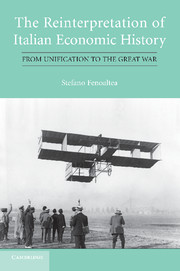Book contents
- Frontmatter
- Contents
- List of Tables
- List of Figures
- Acknowledgments
- Preface
- Introduction
- 1 The Time Series and the Interpretations
- 1A The Measurement of Production Movements
- 2 The Investment Cycle
- 3 The Consumption Cycle and the “Crisis” of the 1880s
- 4 Protection and Migration
- 5 Railways
- 6 North and South
- 6A North and South: A Sectoral Analysis
- 7 The State of Play
- APPENDICES: TARIFFS, TRADE, MIGRATION, AND GROWTH
- References
- Index
6 - North and South
Published online by Cambridge University Press: 05 March 2012
- Frontmatter
- Contents
- List of Tables
- List of Figures
- Acknowledgments
- Preface
- Introduction
- 1 The Time Series and the Interpretations
- 1A The Measurement of Production Movements
- 2 The Investment Cycle
- 3 The Consumption Cycle and the “Crisis” of the 1880s
- 4 Protection and Migration
- 5 Railways
- 6 North and South
- 6A North and South: A Sectoral Analysis
- 7 The State of Play
- APPENDICES: TARIFFS, TRADE, MIGRATION, AND GROWTH
- References
- Index
Summary
The stages-of-growth models of Gerschenkron and Romeo
Italy's “Southern question” has been on the table for over a century. The failure of the South to industrialize and develop is at the heart of the question; the State's responsibility for that failure is at the heart of the historians' debate.
The State's specifically regional policies are not at issue: in the half-century following Unification the special laws to further the development of specific areas were few, tardy, and in any case in favor of the South. Public investment in physical and human capital, too, reduced the initial disparities. The State spent heavily on roads and railroads, but disproportionately so in the South; the State imposed compulsory education, boosting literacy far more in the South than in the North.
Tariff policy, much debated at the national level, had complex effects even within the North and the South. According to Italy's economists of the time the benefits obtained by the protected activities – some industries located primarily in the North, grain-growing widely diffused in the South – were outweighed by the damage suffered by the sectors that were naturally export-oriented: other industries again located primarily in the North, specialized agriculture important to the North but even more so to the South, where it was the only patently dynamic sector. Those who believe protection promoted industrial growth, mainly in the North, and limited the “agrarian crisis,” mainly in the South, see net benefits rather than net losses; but the effect on the North-South differential remains ambiguous, the difference between effects of the same sign.
- Type
- Chapter
- Information
- The Reinterpretation of Italian Economic HistoryFrom Unification to the Great War, pp. 191 - 235Publisher: Cambridge University PressPrint publication year: 2011

